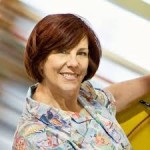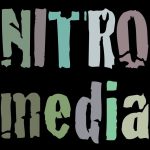oday we sat down with Kathryn Woodcock, an Associate Professor at Ryerson University and asker her 10 questions about herself, the field of Human Factors and it’s contribution to the Theming Industry.

Katherine Woodcock
BTT: For the benefit of those new to the field, how would you define Human Factors Engineering and Ergonomics?
KW: The International Ergonomics Association defines ergonomics, also called human factors engineering, as “the scientific discipline concerned with the understanding of the interactions among humans and other elements of a system, and the profession that applies theoretical principles, data and methods to design in order to optimise human well being and overall system performance.” In a theme park, “system performance” involves an entertaining, thrilling or fun human experience. A good ride is just as thrilling as the individual wants it to be, but no more.
Obviously that ideal amount of thrill is different for everyone, and that is why we have so many different kinds of attractions. If the guest is uncomfortable, or does not enjoy the attraction, system performance is inadequate. Another kind of performance failure is errors, either mistakes of doing something inappropriate or slips of being clumsy.Human engineering addresses all of these aspects of the match between the person and the equipment, structures, tools, vehicles, and environment they use to perform their activity.
BTT: How could a company developing a Theme Park/Amusement attraction benefit from utilizing an Engineer in Human Factors during ride/park development?
KW: Effectively considering human factors reduces the chance of errors and discomfort occurring in the finished system. Human engineering will consider the range of potential users, their capabilities and limitations, examine the goals and tasks performed in the system, and identify vulnerabilities. Many human engineering considerations are simply a matter of making a better choice at the right time, which from a cost perspective is usually in the design stage. Including human factors in the design process can range from formal human systems integration review by human factors specialists, to appropriate consideration of human factors by other engineers on the design team. Human factors considerations can also be part of the evaluation loop after the attraction opens, particularly if there are instances of guest discomfort or patterns of errors or misuse.
BTT: In Theme Parks, what factors do you feel are least explored in regards to Ergonomics and Human Factors Engineering?
KW: No matter what the context, including the amusement context, people can tend to fault a person who did not press buttons in the correct order as described in the instructions, or who improvised rather than following every posted rule. The design capabilities of the amusement industry are phenomenal, so the most potential for expansion is in how we explain unsuccessful human performance – or in plain language, situations where someone did something “wrong”. Rather than ask “can a person perform correctly?”, we need to ask “can someone perform incorrectly?” and if so, to explore why, and whether we can adjust that performance through design.
BTT: Can Human Factors Engineering help build the theme/story or is it all about safety?
KW: Human factors is about simultaneously achieving system performance and well being, so safety is only half the picture. You cannot have “good ergonomics” if you only have safety –good ergonomics also improves performance. In an amusement attraction, “performance” is when thrill, entertainment, and comfort are at the level the guest prefers.
Once the theme or narrative has been determined, great designers use human engineering when they anticipate how guests will react to specific experiences. Design of the attraction, including the queue and pre-show experiences, can put the guest into a certain frame of mind, communicate goals and provide knowledge they need to enjoy the attraction. We don’t want to take the guest out of the story by forcing them to stay aware of the actual physical world, so we need to carefully superimpose the boundaries of the fictional world onto (or within) the boundaries of the real physical world.
Using human factors knowledge to predict guests’ instinctive reactions enables a designer to make the ride successful without over-relying on instructions and labels. Some familiar examples are tricks used to get good on-ride photos in some attractions, such as a visual effect such as a themed “lightning flash” or the ride vehicle passing by a mirror, that attracts the guest’s attention to have them facing toward the camera, or a bunny-hop roller coaster hill that makes people smile just before the photo is taken.
Not only can human engineering be part of theming, but theming and show can enhance safety. For instance, without theme, to heighten thrill, we would need to increase physical sensations that some people might not be able to tolerate safely, and others simply might not enjoy. Illusions and sensations can increase the sensory experience so a great thrill can be experienced with less physical load.
BTT: Which do you feel is more important, analysing “ride behaviour” or” rider behaviour”?
KW: Human factors engineering is not about the person OR the machine — it is about the interaction BETWEEN the person and the machine. Those who paid extra for an “ergonomic” chair may be disappointed, but there is no such thing. A chair cannot be ergonomic. The combination of a chair + a person + an activity is ergonomic or not ergonomic. A chair that supports good performance and well-being when used for a specific purpose is an “ergonomic” situation, no matter how little you paid for the chair, and if the chair is not right for the specific person and the specific activity, it’s not ergonomic no matter what it cost and what the salesman called it.
In the case of a ride, there are physical ergonomic factors of the person being able to fit into where they need to be (such as into a seat and out through an emergency exit) and not being able to fit through where they should not fit through (such as beneath the closed restraint or into hazardous zones). However there are so many more human factors aspects with both physical ergonomics and cognitive ergonomics that affect the ride, whether the designer considers them or not, including sight lines, physical strength, posture, dexterity and agility, memory and knowledge.
Most people consider rider “behaviour” to be the autonomous actions the rider has chosen to perform given the amount of freedom allowed by the forces and restraints and available space around the rider. Sometimes we are disappointed that the rider behaves in a non-approved way. However guests do not usually board a ride with the intention to behave a certain way, particularly a negative way, no matter what happens.Much if not most of the guest’s behaviour during the ride cycle is a reaction to what happens during the ride action and show.
Therefore, not only is the ride and show within the designer’s control, but indirectly so is a lot of rider behaviour. That makes design more powerful than a strategy of trying to talk people into certain behaviour through signs and spiels, but in the end, it isn’t one or the other. We need a compatible combination of design, signs, spiels, operator vigilance, and continuous learning from outcomes.
BTT: Do you feel the current themed industry caters enough to those guests with limitations?
KW: I think people from many industries and communities ought to spend more time in theme parks paying attention to inclusive design. The entertainment industry seems to understand that people with disabilities have disposable income, and also that we affect the discretionary spending of our companions who will often choose to patronize an attraction we can enjoy rather than one that excludes us. The very best designers seem to rise to the challenge when they tackle inclusive design. On any given day at any given park, there may be things that don’t work as well as they should, but for accessibility, I would rather be in a theme park than almost anywhere else.
BTT: What instances have you seen where a company has made it their goal to allow for these limitations and not penalized the individual for them as is quite often the trend?
KW: Wheelchair access is the most obvious example. When you consider that not only people with mobility disabilities use wheels, but so do babies and toddlers, who are part of the prime theme park demographic, it is easy to see why parks excel at wheelchair access. We see not only smooth and wide circulation pathways, but also creative ways to load and unload guests who need to transfer or ride in their wheelchair, using strategies that include alternate loading platforms and adapted ride vehicles. Guests with vision and hearing disabilities are also accommodated, not only with conventional tools like Braille, audio description, text captions and sign language interpreters, but also with designing attractions to be multi-sensory experiences.
Many theme parks are brilliant at layering visual theming, sound effects, scents, lights and motion in the environment, and tactile interactive elements, among other things. These multi-sensory themed effects enrich the experience for everyone, and provide multiple things that are accessible, even if everything is not accessible to each person. In the “real world”, all too often there is the “normal” way and possibly a grudging alternate way, but theme parks show how alternates, even multiple alternates, can be used to create a rich and immersive experience for everyone.
BTT: Why have you chosen to focus on Theme Parks?
KW: I initially began studying inspection, and was interested in parks and carnivals because of the similar technology across a wide range of business structures. The more time I spent in this environment, the more opportunities I saw to look at human engineering of the attractions themselves, both to explore new ideas as an academic, and to learn from the excellent examples that already exist. And let’s be honest: it is a complete pleasure to spend time in a field where a good, happy experience is the whole purpose of the business.
KW: What is the main focus of the Programme that you deliver and what is next for you?
KW: Ryerson University is a distinctly urban, culturally diverse and inclusive university in Toronto, Canada with more than 28,000 students in undergraduate and graduate programs. Our undergraduate science degree in health and safety is unique in Canada. My THRILL Lab provides research and learning experiences for students from several different programs including engineering and science. For the past 10 years, I have become involved in professional development training for professionals in the industry and other knowledge-transfer activities through NAARSO, IAAPA, AIMS, standardisation organisations ASTM, CSA, and our local regulator TSSA in Ontario. The current plan is to continue this and expand some formal human-centred design training options for amusement attractions, both before and after graduation.
BTT: What does the term “Theming” or “Theme” mean to you (i.e. theme park or themed attraction)?
KW: Theming in this context is the overlay of a fictional narrative onto the actual experience. The guest is being transported in a vehicle of certain actual dimensions, at a certain actual speed and acceleration, at a certain actual elevation, by means of a specific technical mechanism. In the narrative, she is chasing dragons, exploring distant planets, or travelling through the pages of a storybook. Of course, most guests realise the narrative is fiction, but they may not precisely know what real-world mechanisms are underlying the experience, and that knowledge or excessive consciousness of it may spoil the attraction for them.
Responses © 2013 Kathryn Woodcock











